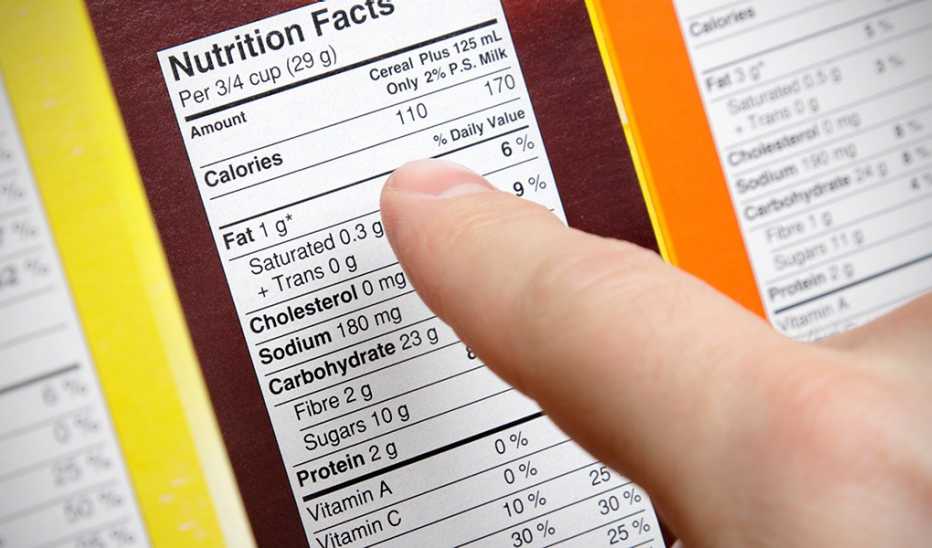Challenges


Quick Win
Nutrition information and ingredients list are essential reading. Learn how to interpret food labels based on information from the U.S. Food and Drug Administration.
Try This Today
Read through the information below. Then pull out a few packaged foods from your pantry or fridge and see what you learn.
- Calories. On a food label, the number of calories tell you how much energy one serving provides. Calorie needs vary by age, activity level, height, weight and whether you’re trying to maintain, lose or gain weight. The U.S. Department of Agriculture’s MYPlate Plan can give you an estimate of your needs.
- Serving information. The serving size is the amount of food that contains the calories and nutrients listed; it is not a recommendation for the amount you should eat. Note the serving size as well as the total number of servings in the container.
- Nutrients. Nutrition labels list amounts of certain important nutrients, including those you want to make sure you get enough of each day — such as fiber and protein — and those you may want to limit, such as sodium, saturated fat and added sugar.
- Total fat. This category, listed in grams, often includes saturated fat and trans fat as subcategories.
- Dietary cholesterol.
- Sodium.
- Total carbohydrates. This section is typically broken down into dietary fiber and total sugars. Total sugars includes naturally occurring sugars found in foods such as fruit and dairy products as well sugar that’s been added. Added sugars, the ones experts recommend limiting, include all forms of sugar, such as corn syrup, malt sugar, dextrose, sucrose, honey or concentrated fruit or vegetable juice.
- Vitamins and minerals. Calcium, vitamin D, iron and potassium — nutrients that many people don’t get enough of — are required on labels. Manufacturers may also include vitamin A, vitamin C and other nutrients.
- Daily value. To the right of the list of nutrients, you’ll see a column titled “% Daily Value” or “%DV.” A nutrient’s daily value refers to the recommended amount to consume each day — or, in the case of saturated fat, sodium and cholesterol, the upper limit for daily consumption. For each nutrient, the percent daily value indicates how much of the daily value a serving contains. Percent daily values can be useful for getting a general sense of whether a food contains high or low levels of certain nutrients. Keep in mind that daily values are references for the general population. Talk with your doctor or a registered dietitian for nutrient recommendations tailored to your health needs.
- Ingredients list. Ingredients are listed by weight, in descending order, with the most abundant listed first. Steer clear of foods that list forms of sugar or other unhealthy ingredients high the list and those with long lists of ingredients that aren’t familiar to you. Highly processed, or processed, foods often contain ingredients like preservatives, thickeners, emulsifiers and artificial colors and flavors to improve a product’s taste, texture or shelf stability.












More From Staying Sharp
Add Walnuts to Your Next Meal
They’re packed with healthy omega-3s
6 Foods Rich in Vitamin E
These foods may help your mood and your memory
Tips and Tricks to Sneak in the Veggies
Sneak more veggies into your favorite dishes—casseroles, even desserts!